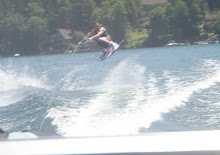Implements and children.
This subject is a controversial topic that can go both ways. However as a personal stand point, I believe implements such as lacrosse and or hockey sticks are a great thing to accomplish at a young age. Yes, it might take a little bit longer for children to grasp the concept of both an implement and motor skill put together, but in the long run there going to achieve both using an implement such as a tool to play a sport, and develop their motor skills and movement skills while using these implements. Yeah, you might say this is a bias view since I play both hockey and lacrosse, but on an honest level, looking back at it I believe it helped. Not only was I able to play a complex sport, but during that complex sport I refined my motor skills while growing from one age group to the other, and at the same time I learned hand eye control and manipulative skills that I might not have learned in playing soccer or some other sport not involving implements.
I feel implements in sports and or physical activity in the long run gains an extra step then someone taking small steps, and then finally trying to use an implement after thoughts steps. If you use an implement at a young age it will acquire more focus and time, but at the end you have achieved both motor skills and the use of an implement, meanwhile if you just did physical activity without an implement. Yes, focusing on motor skills are very important at a young age and involving an implement might over whelm a child, but if you know how to teach a child and are a good teacher, there should be no problem killing two birds with one stone. Also, if kids grow up using implements and there motor skills are not acquiring life-time goals, then you take the implement away and work on what needs to be done to fix that development. Once that development is met, you put the implement back in the hands. Now the child has a better understanding of what he can and cannot do, and hopefully has the confidence to use implements during a young age for physical activity and or sports. With that said, I feel implements should be looked at as positive views on how kids develop during their younger years.

